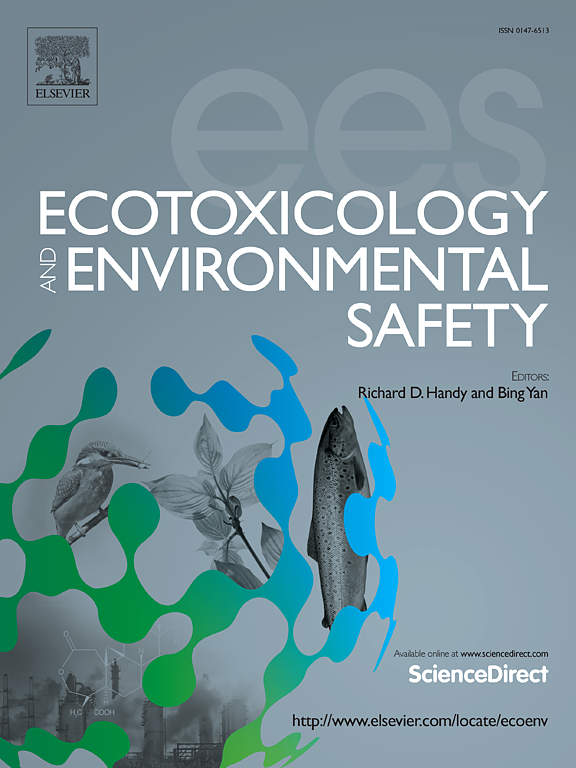IF 6.2
2区 环境科学与生态学
Q1 ENVIRONMENTAL SCIENCES
引用次数: 0
摘要
纳米塑料(NPs)因其粒径极小而成为最普遍、最不易察觉的塑料污染物。植物根系已成为 NPs 从自然环境进入食物链的重要途径。通过与重金属或有机污染物结合,与单一污染物相比,氮氧化物可表现出更强的生物毒性。尽管许多研究分别关注了氮磷的植物毒性和微生物毒性,但就我们所知,还没有综述从植物根瘤菌圈系统的角度总结了氮磷与多种污染物结合的毒性。通过总结2015年至2025年的样本,本综述强调了氮磷物质会影响植物和微生物的光合作用、基因转录和酶活性。粒径较大的 NPs 还会破坏根圈环境的化学平衡,加剧植物和微生物之间的养分竞争,最终影响地球化学循环。不同粒径和浓度的 NP 可毒害从表层到遗传物质的各种生物结构。在复合污染物中,氮磷与其他污染物结合在一起,与单一污染物相比,会进一步破坏植物体内的元素循环,降低微生物群落的多样性,并增加其他污染物在根瘤菌圈系统中的积累。这些发现为了解氮磷化合物的生物毒性和降解含有氮磷化合物的复合污染物提供了新的视角。此外,结合本综述的研究成果,对氮磷钾与根瘤菌圈系统的关系提出了一些研究展望。本文章由计算机程序翻译,如有差异,请以英文原文为准。
Effects of nanoplastics and compound pollutants containing nanoplastics on plants, microorganisms and rhizosphere systems: A review
Nanoplastics (NPs) are the most widespread and least detectable type of plastic pollutant due to their extremely small particle size. The root system of plants has become an important pathway for NPs to enter the food chain from the natural environment. By combining with heavy metals or organic pollutants, NPs can exhibit greater biological toxicity compared to single pollutants. Although many studies have focused on the phytotoxicity and microbial toxicity of NPs separately, to the best of our knowledge, no review summarizes the toxicity of NPs from the perspective of the plant rhizosphere system with a combination of pollutants. By summarizing samples from 2015 to 2025, this review highlights that NPs can affect photosynthesis, gene transcription, and enzyme activity in both plants and microorganisms. NPs with large particle size can also disrupt the chemical balance of the rhizosphere environment and intensify competition for nutrients between plants and microorganisms, ultimately affecting the geochemical cycle. NPs of different particle sizes and concentrations can poison various biological structures, from surface layers to genetic material. In compound pollutants, where NPs combine with other contaminants, they can further disrupt elemental cycles in plants, reduce microbial community diversity, and increase the accumulation of other pollutants in the rhizosphere system compared to single pollutants. These findings provide new insights into the biotoxicity of NPs and the degradation of compound pollutants containing NPs. In addition, combined with the research results of this review, some research prospects on the relationship between NPs and rhizosphere systems are given.
求助全文
通过发布文献求助,成功后即可免费获取论文全文。
去求助
来源期刊
CiteScore
12.10
自引率
5.90%
发文量
1234
审稿时长
88 days
期刊介绍:
Ecotoxicology and Environmental Safety is a multi-disciplinary journal that focuses on understanding the exposure and effects of environmental contamination on organisms including human health. The scope of the journal covers three main themes. The topics within these themes, indicated below, include (but are not limited to) the following: Ecotoxicology、Environmental Chemistry、Environmental Safety etc.

 求助内容:
求助内容: 应助结果提醒方式:
应助结果提醒方式:


